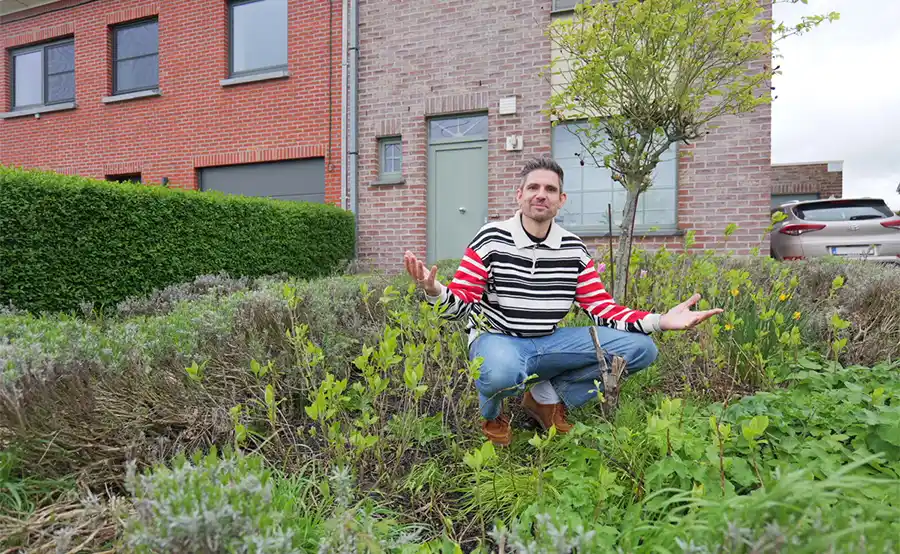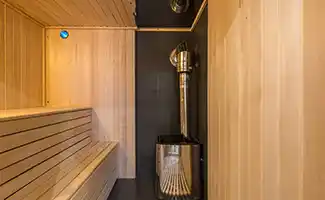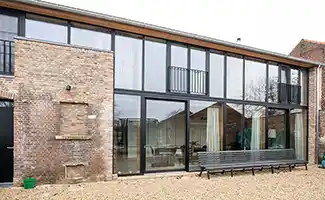The An Turas shelter in Tiree, designed by a collaboration of Scottish architects and artists, is one of the most beautiful new buildings in Britain. It is one of the contenders, if an unlikely one, for this year's Stirling prize. Whether it wins or not hardly matters, for this haunting and elemental structure seems set to take its place alongside the island's Iron-Age standing stones as a thing not of fleeting fashion but of all-but-timeless history.
Nature and time have been kind to Tiree. Warm and exceptionally sunny, ideally sited on the Inner Hebrides and midge-free in the height of summer, the island is a refuge for crofters, rare birds, porpoises and those dreaming of seaside solitude within 40 minutes' flying time of Glasgow. Some 800 people live here; the laird is the Duke of Argyll. The Atlantic, though, does cut up rough in winter; so much so that the ferry to Oban is sometimes unable to berth at Tiree's Scarinish Pier on the gaping mouth of Gott Bay.
The shelter is where, when the winds are strong, passengers can wait for one of Cal-Mac's chunky ferries to tie up alongside the island's workaday pier. When the Clansman or the Isle of Arran has sailed back to the wooded confines of the Sound of Mull and Oban, Tiree and the An Turas shelter belong to roaring nature. And to anyone fortunate enough to come this way.
The shelter's great strength is twofold: first, it is an extension of the landscape, although not entirely slave to it; and second, it frames spine-tingling views of sea and sky - of skuas, herons, kittiwakes and, as the year closes in, Whooper swans winging here from Iceland. It is easy to imagine the squadrons of metal birds - Halifaxes, Warwicks and Wellingtons - that flew from here to protect Atlantic convoys and tackle the U-Boat menace during the second world war. Tiree's historical and geographical importance is out of all proportion to its modest scale - not more than 40 square miles - and location. Today, a peaceful place, it is best known to most outsiders as a haven for surfers.
The An Turas shelter cost £98,000. It was so expensive only because Tiree is short of indigenous building materials, and the steel, glass, plywood, iriko timbers, felt and concrete blockwork that have gone into the building have had to be shipped from the mainland. It could be argued that a work of landscape art such as this would best be built in what local materials there are - yet this would be to miss a part of its point. This is a delightful balance between artifice and nature, what God gave Tiree and what Charlie Sutherland and Charlie Hussey - two Edinburgh architects and former assistants of the late James Stirling, after whom the prize is named - have brought to the island from outside.
The project was set up by Brian Milne of Tiree Arts Enterprise, a group of local and loyal visiting artists formed some 10 years ago. Together with the architect Bob Steedman, Milne chose the two Charlies and then teamed them up with Sandra Kennedy, Glen Onwin and Donald Urquhart, a trio of artists whose work has encompassed, in one way or another, the boundless landscapes of the western isles.
They all tramped Tiree in search of visual clues. This, after all, was to be no ordinary waiting room or windbreak but a place for contemplation as well. They wrote down a list of their collected observations: white walls, clean lines, minimalist character, ideal proportions, intimate spaces, light and shadow, panoramic views, vast sea, vast sky, black rock, white sand, green landscape, intense sun, driving rain. Most of all, they observed how Tiree, flat and treeless, is like a low, level band stretching across the ocean.
It is not hard to see how these ideas and images have been forged into the form and look of the shelter. They fuse to make the structure striking, both at one with and in contrast to its surroundings. Its black and white contrasts beautifully with the gloriously improbable palette of sunset colours over Tiree, while echoing the green, black and white colour scheme of the island itself.
In between undulating ground and massive sky, the shelter presents a horizon of white render, black stained timber, glass and steel against a backdrop of clouds, hills, sea, patrolling swans and incoming ferries. It comprises three sections. The first is a passageway, open to the sky, between white rendered concrete block walls. The second is a slatted timber-covered walkway. The third is an enclosed steel and glass viewing box. These lead seamlessly one into the other, and end in a framed, painterly view of Gott Bay. It would be easy, in mild weather, to while away hours here watching sea, sky, wildlife and the changing play of light on the ocean in one direction and on the west Highland hills in the other.
Sutherland Hussey have been a good choice of architects. Graduates from Glasgow's Mackintosh School of Architecture in the late 1980s, they learned their craft from not only Stirling but also Michael Wilford (architect of the Lowry Centre, Salford and the new British embassy in Berlin) and Renzo Piano, one of the world's greats. They are happily undogmatic in their approach to design and seem to approach each of their projects with an open mind. On the south-west tip of England, they have built a ruggedly handsome timber and steel dairy for Catherine Mead, maker of Cornish Yarg cheese. At the other end of the scale, they have been working up designs for railway stations, offices and colleges, all of them characterful yet nicely understated.
Understatement was certainly required on Tiree. And yet, small, unpretentious buildings like this can have a power and appeal out of all proportion to their scale and ambition. Like Tiree itself.
Three schemes I have looked at recently spring to mind. Tony Fretton's Faith House in Dorset is one. The deeply moving chapel of Santa Maria degli Angeli (1990-6), built by Mario Botta on the slopes of Monte Tamaro in Switzerland in memory of the wife of the owner of a local cable car company, is another. Van Heyningen and Haward's hide for the RSPB on the Rainham Marshes at Purfleet, though it is still in progress, promises the same thing closer to home in a landscape that is flat as a pancake.
The Swiss architect Peter Zumthor, whose magical thermal baths in Vals fall into the same category, has this to say about this breed of heartfelt buildings, inspired by the landscape of nature and the imagination: "It is virtually impossible to imagine the place where they stand without them. These buildings appear to be anchored firmly in the ground. They create an impression of being a self-evident part of their surroundings." The An Turas shelter is, already and unexpectedly, a self-evident part of Tiree.
· The winner of the Stirling Prize for Architecture will be announced on Saturday. The ceremony will be broadcast on Channel 4 on Sunday.
Meest gelezen
Meld je aan voor onze nieuwsbrief
Elke werkdag het laatste nieuws in uw mailbox!
Aanmelden!Alleen de nieuwsbrief, geen spam









